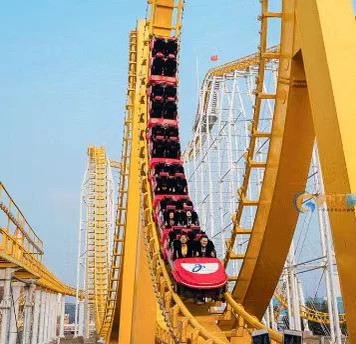- Albanian
- Arabic
- Belarusian
- Bengali
- Czech
- English
- French
- German
- Hebrew
- Hungarian
- Indonesian
- irish
- Italian
- Japanese
- kazakh
- Persian
- Russian
- Thai
- Uzbek
- Vietnamese
Exploring Various Categories of Roller Coasters and Their Unique Features
Exploring Different Types of Roller Coasters
Roller coasters are among the most exhilarating attractions found in amusement parks worldwide. They come in a myriad of designs, each offering a unique thrill. From gentle hills to heart-pounding drops, the variety within roller coaster types caters to a wide range of thrill-seekers. In this article, we will explore some of the most prominent types of roller coasters and what makes each one special.
1. Wooden Roller Coasters
Wooden roller coasters are the classics of the amusement park world. Known for their nostalgic appeal and rustic charm, these coasters have been thrilling riders since the early 20th century. Made primarily from wood, they feature a series of hills, drops, and tight curves, delivering a genuine sensation of speed and airtime. The creaks and groans of the wooden structure enhance the overall experience, making every ride a reminder of the golden age of roller coasters. Popular examples include the “Goliath” at Six Flags Magic Mountain and the iconic “Coney Island Cyclone.”
Steel roller coasters revolutionized the world of thrill rides. Introduced in the 1970s, they are known for their smooth rides and the ability to execute more complex inversions and maneuvers. Steel coasters can be taller, faster, and feature more intricate designs than their wooden counterparts. They often include loops, corkscrews, and zero-gravity rolls, making the experience more intense. Iconic steel coasters include “Millennium Force” at Cedar Point and “Steel Vengeance” at the same park, which has garnered numerous awards for its innovative designs.
3. Inverted Roller Coasters
different types of roller coasters

Inverted roller coasters take the experience to a new level by suspending riders below the track, allowing for breathtaking views and thrilling inversions. The feeling of being “inverted” as you soar through loops and twists creates a unique sensation that many find exhilarating. The ride experience is often enhanced by the layout, which encourages a sense of freedom as riders dangle below the tracks. Notable examples include “Batman The Ride” and “Raptor,” both of which provide a thrilling experience for adrenaline junkies.
4. Launch Coasters
Instead of the traditional lift hill that most coasters use, launch coasters employ various mechanisms to propel riders forward at incredible speeds. This immediate rush is often highlighted by a sudden burst of acceleration, which can be as thrilling as the twists and loops that follow. Launch coasters can include linear synchronous motors (LSM) or hydraulic launch systems to achieve impressive speeds. “Top Thrill Dragster” at Cedar Point and “Kingda Ka” at Six Flags Great Adventure are among the fastest launch coasters in the world, reaching speeds of over 120 mph in just a few seconds.
5. Hybrid Roller Coasters
In recent years, hybrid roller coasters have emerged as an exciting new trend. These coasters combine elements of both wooden and steel structures, offering a unique blend of smooth rides and classic wooden coaster charm. They often feature steep drops, inversions, and airtime hills, appealing to fans of both styles. Noteworthy examples include “The Wizard” and “Steel Vengeance,” showcasing the best of both worlds.
Conclusion
With a wide array of designs and experiences, roller coasters continue to capture the hearts of countless thrill-seekers. Whether you prefer the classic feel of a wooden coaster, the intense speed of a launch coaster, or the towering heights of a steel giant, there’s a roller coaster out there for everyone. Each type offers its own unique blend of excitement and challenge, making them a staple of amusement parks around the globe. So the next time you visit a theme park, be sure to explore the different types of roller coasters available—your next adrenaline rush awaits!
-
Flume Ride-Hebei Zhipao Amusement Equipment Manufacturing Co., Ltd.|Thrilling Water Attraction&Customizable DesignJul.30,2025
-
Flume Ride - Hebei Zhipao Amusement Equipment | Water Coaster, Thrilling DescentJul.30,2025
-
Flume Ride - Hebei Zhipao | Thrilling Water AttractionJul.30,2025
-
Flume Ride: Thrilling Water Attraction by Hebei Zhipao|Log Flume Manufacturers&Flume Ride DesignJul.30,2025
-
Flume Ride-Hebei Zhipao Amusement Equipment Manufacturing Co., Ltd.|Thrilling Water Coaster, Safe DesignJul.30,2025
-
Flume Ride-Hebei Zhipao Amusement Equipment Manufacturing Co., Ltd.|Thrilling Water Attraction, Safe DesignJul.30,2025
